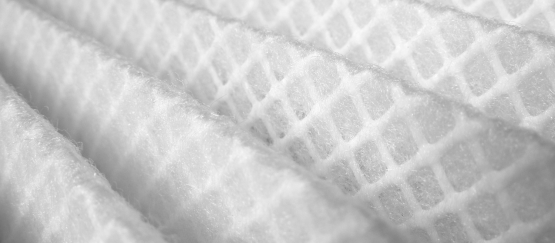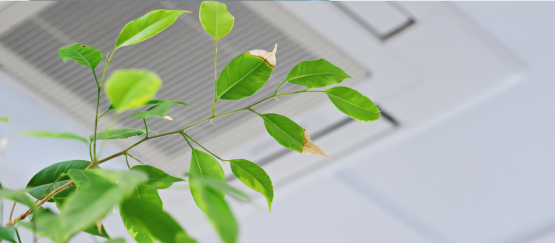It’s no secret that we are surrounded by pollutants 24/7. We breathe them, we ingest them, and our skin is a fertile ground for the tiniest pollution particles floating in the air. Unfortunately, it is not only outside that we are facing this threat. The so-called particulate matter can also be drawn indoors through a building’s HVAC system. Not to forget mold, bacteria, and dust-mites that can build up over time on surfaces in moist environments and excrete a slimy, glue-like substance, aka biofilms. These biofilms can be thin or thick and attract dust, which turn them into costly affairs for organizations.
According to a study from the Florida State University, biofilms cost US companies billions of dollars every year due to system damage, loss of energy, infections of staff, messy and ineffective cleaning solutions, and reduced indoor air quality, which impacts health and well-being of employees. And optimized indoor air quality is especially crucial in times of a global pandemic.
To create a healthy environment for all inhabitants of a building, including offices, schools, laboratories, hospitals, or government facilities, high-performance UVC solutions for air and surface decontamination can come to the rescue.
In their technology evaluation report Biological Inactivation Efficiency by HVAC In-Duct Ultraviolet Light Systems, Steril-Aire, Inc., EPA (United States Environmental Protection Agency) states that “UV lamps have been used to inactivate airborne microorganisms for many years…and UVG [UVC form mercury lamps] has been shown to inactivate viruses, mycoplasma, bacteria, and fungi when used appropriately.”

What is an air filtration system?
Generally speaking, air filtration systems prevent airborne microorganisms from entering a property by capturing particles through air filters.
There are different systems available:
- UV Air Filtration Systems, for example, bathe harmful microorganisms, such as bacteria, mold, mildew, and viruses within the duct-work in UV light, which disinfects the passing air and effectively eliminates the germs. Pets and people will not get harmed.
- Ionization Purifiers, on the other hand, attack the particles that are already floating in the air. They emit clouds of magnetically charged particles during operation, which give an opposite magnetic charge to the contaminants in your air. When these contaminants enter the purifier, they’re attracted to metal plates which can then be removed and cleaned.
Placement of Lighting Systems
When using UV air filtration systems, the placement of the lighting system is important for high effectiveness. The UVC purification lights must be mounted next to the evaporator (cooling) coil and on the downstream (cold air side) of the coil so that they shine both on the air conditioner cooling coil and on the water drain pan underneath the coil. These are the main areas where mold spores grow.
If the UV lamps are mounted elsewhere, slime, algae, bacteria, and mold can grow on the cooling coil, drain pan, and even the blower and duct-work. As a consequence, these organisms will contaminate the air that your employees are breathing.
Benefits of Air Filtration Systems
Today we’re sharing the top six ways implementing an air filtration system can impact your business:
- Optimization of HVAC System Performance
- Improvement of Indoor Air Quality
- Elimination of Costly Cleaning Programs
- Low Lifecycle Costs
- Reduced Maintenance Costs
- Increased Staff Health and Well-being
Here’s more on how each of these benefits can impact both the health of those regularly within your facility and your bottom-line:
Optimization of HVAC System Performance
VC solutions reduce HVAC energy costs by restoring heat transfer and net cooling capacity.

Improvement of Indoor Air Quality
Germicidal UVC irradiation is an effective method to get rid of mold, bacteria, and viruses without producing ozone or other secondary contamination.

Elimination of Costly Cleaning Programs
UVC solutions are environmentally-friendly as there is no need to use harmful chemicals and disinfectants to clean the system.
Low Lifecycle Costs
Depending on the product, your ROI can happen within 24 months or less.
Reduced Maintenance Costs
UV bulbs will need to be replaced every 12 to 24 months, depending on the model. One UV stick light bulb is estimated to last 9,000 hours, just over one year. New bulbs are relatively inexpensive and can be replaced during your annual HVAC service. So, for just a minor price increase to your routine maintenance plan, you staff can enjoy improved air quality.

Increased Staff Health and Wellbeing
The healthier the environment in your office spaces, the better people can perform, which means that absences because of health issues decrease and team productivity increases.
Ready to create a healthier environment in your office spaces?
Schedule a service consultation with our team today to learn more and determine the best solution for your building and strategic goals.
